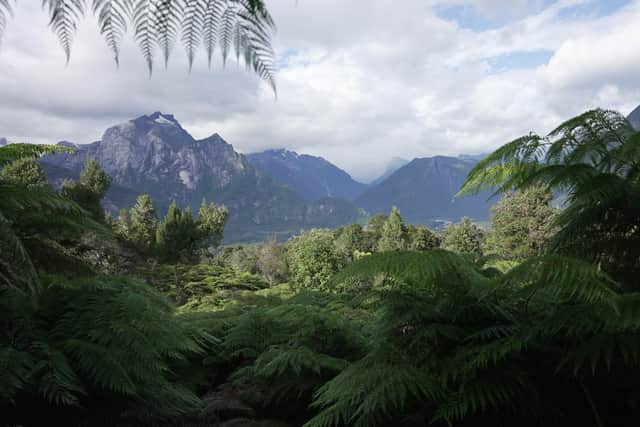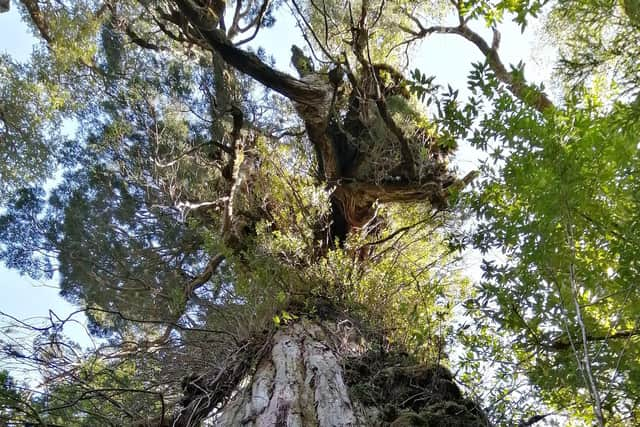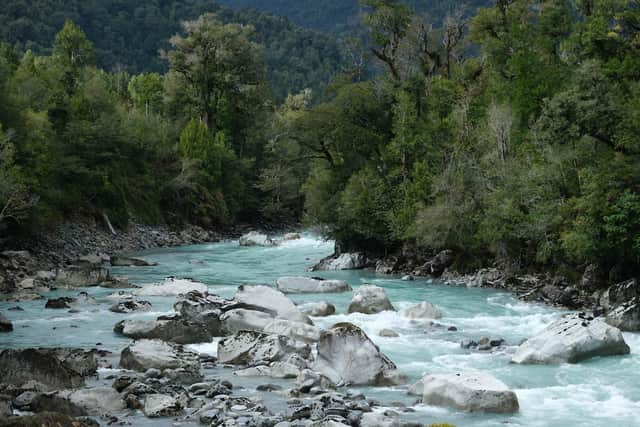From Scotland to Southern Chile on a journey to protect an iconic species of tree – Scotland on Sunday Travel


It was impossible to resist working in Chile during my 30 years employed at the Royal Botanic Garden Edinburgh. A land of extraordinary extremes, it provides habitats for such a colourful kaleidoscope of wildlife and for this reason it has attracted botanists and horticulturalists like myself for centuries. Just imagine being surrounded by a spectacular flowering desert stretching out across the coastal plains and far beyond. Then, within two hours standing on the shores of a shimmering azure-blue lake, mottled pink with a flamboyance of flamingos feeding against a backdrop of some of South Americans highest and most active volcanos.
This long thin country of around 6,400 kms and in places barely 90 kms across, allows these environmental extremes to be savoured in a single day. Not surprisingly the country’s north-south contrasts are even more stark; to the north the Atacama is the driest desert on Earth and to the south the world’s most extensive temperate rainforest receives up to six metres of rain a year.
Advertisement
Hide AdAdvertisement
Hide AdIt is to the south of Chile where I mainly travel, with my recent adventure to a remote rainforest which heralds a remarkable hidden green Gateway to the subantarctic forests of Patagonia known as Vodudahue. It is here, at the entrance to a vast ‘green island’ where I work with a team of international scientists to help unravel the natural wonders of this extraordinary part of the world.
From Chile’s capital, Santiago, it takes two days to make the 1,200 km journey to Vodudahue; first by plane and then by car and finally in a small boat. The last shopping opportunity is in the small frontier town of Hornopirén, its name in the local Mapundungún language meaning ‘Snow Oven’ which refers to the nearby Hornopirén Volcano that dominates the landscape.
The two-hour boat journey south of Hornopirén to Vodudahue starts from the coastal village of Cholgo and threads its way down through the Comau Fjord. This 70 km long body of water, once carved out to a depth of over 450 meters by powerful advancing glaciers, is fed by the mighty Vodudahue River.
My recent journey was with a party of biologists who specialise in temperate rainforest wildlife including expertise in the trees, birds, butterflies, fungi, moths and with a knowledge of rewilding. The backdrop along the entire length of the journey is of snow-capped volcanos, with hanging glaciers, the lower slopes furnished with dense rainforest that dramatically plunge to the coastline. The sheer number of waterfalls seen spilling out from high up in the evergreen forests is evidence of the relentless rainfall this part of Chile receives. The journey down through the fjords is a real adventure, especially on those special days when in the distance a pod of breaching Peale’s Dolphins is spotted - their playful theatrics performed with such agility.
The forests of this remote part of Chile are one of the few remaining strongholds for the giant Patagonian Cypress, known locally as alerce. Standing on a boat provides the perfect vantage point from which to spot the forested steep slopes of this long-lived tree. Recent research suggests that this conifer could be over 5,000 years old making it the oldest living thing on our planet. Fitzroya cupressoides is named after Vice-Admiral Robert FitzRoy, the captain of HMS Beagle during Charles Darwin famous voyage which in 1835 made its perilous journey through these very same waters. This tree has been a major focus of my


research during the past 30 years and has resulted in 100s of trees being planted in Britain and Ireland from seed and cuttings collected from native populations in southern Chile. These trees are effectively an insurance policy in case anything catastrophic happens to this stately tree in the wild.
The final part of this memorable journey is signalled by the sighting of Douglas Point, a 1,400-metre-high granite peak piercing through the clouds and standing guard over the massive estuary of the Vodudahue river. The US business magnate Douglas Tomkins, after who the imposing mountain is named, has made one of the most important contributions to South America forest conservation. Together with his wife Kris Tompkins, he has protected a 400,000-hectare area of forest known today as the Douglas Tompkins Pumalín National Park. Following his untimely death in 2015, the reserve was gifted to the Chilean state and
now forms part of a four million hectare National Park which is the largest protected area in South America.
Advertisement
Hide AdAdvertisement
Hide AdMy work at Vodudahue is part of new focus to develop a conservation strategy which was commissioned by the Drake Group to be carried out by Fundación Chilco, a UK-Chilean alliance of scientists, environmentalists and artists. The word Chilco is the common name for the Fuchsia which is such a common shrub in Chile and frequently seen cultivated in UK gardens.


Our early mission has been to bring together a multidisciplinary team of scientists and collaborators to carry out a series of studies that allow us to better understand the natural history of Vodudahue and its environs. The aim of this project is to record every living thing from the largest mammal to the smallest insect. Globally, such intensive studies are rarely undertaken, even in protected areas. Vodudahue will become a vital research hub and hopefully will provide training for Park Rangers from the vast network of protected areas in southern Chile.
Already, after six months of intensive monitoring, new species have been revealed. Exciting discoveries also include a formerly extinct fern and our camera traps have recorded an extremely rare rodent, the Patagonian viscacha, pumas and the smallest deer in the world, the Pudu.
The Vodudahue project is managed by Fundación Alerce 3000, the name inspired by the veteran Patagonian Cypress, alerce, forests of which once dominated the valley, but overexploitation almost eliminated it from the area during the 19th century. The restoration of this iconic species and other forest trees will be an important focus of our work in this remarkable gateway to the southern end of the world.
Plants From The Woods And Forests of Chile by Martin Gardner is published on 9 July 2022 at £35, available in bookshops and online at www.rbgeshop.org